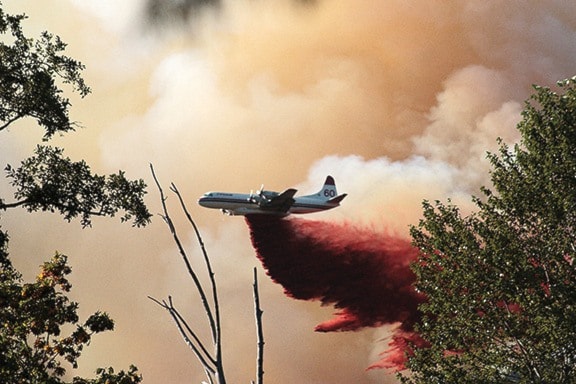At last measurement, a Skutz Falls fire that ignited Tuesday evening was mapped at 16 hectares, up six hectares from Wednesday’s estimate, according to the BC Coastal Fire Centre, but that number may be deceiving.
While the fire likely did grow in area, the higher measurement also means crews were able to gather more exact GPS data as to the fire’s borders on Thursday compared to previous days’ estimates, explained Fire Information Officer Marg Drysdale.
“It’s a moving target for the first little while,” she said. “You take a couple of people’s best guesses and you factor in smoke and you factor in slope, all of those things, and until they actually can get a mapped size, it’s never exact.”
The human-caused fire was 50 per cent contained as of Thursday afternoon.
Drysdale said the incident commander reported that with the personnel that he has — now a crew of 75 on the ground in addition to five helicopters in the air and other aircraft on standby — he believed he’s going to have better containment by the end of Thursday. The commander gave no indication of how much containment is hoped for.
“It’s a lot of slash on the ground, it’s tough going so he doesn’t want to release a number until he hits it,” Drysdale said. “It’s just gruelling work, there’s no doubt about it. This type of fire, always when you’re in slash, the ground crews are just working so hard. It’s just a hard slog for them to get through this.”
Lake Cowichan and Sahtlam Firefighters were called out to a reports of brush fire about 4:30 p.m. Tuesday.
Initial 9-1-1 calls had dispatchers and local crews wondering if there were actually two fires burning. but investigation revealed the fire was just large enough to be seen from two different communities.
Cowichan Valley volunteer firefighters quickly realized what they were dealing with, and the call went out to the BC Wildfire Service.
Within an hour aircraft were circling overhead.
Firefighters from the BC Wildfire Service worked through the night to combat the blaze which is about 10 kilometres east of Lake Cowichan.
The first resources dispatched included two initial attack crews of three firefighters each, air tankers— including the Martin Mars — two BC Wildfire Service response officers, 10 contract fire fighters, two medium helicopters, and two water tenders, Drysdale confirmed.
An industry representative and industry firefighters were also on scene and the landowner also brought in private crews.
Tuesday night the Martin Mars water bomber made a total of six drops on the fire. According to Coulson Flying Tankers, the aircraft averaged drops of 21,600 litres for a total of 130,000 litres in about an hour and a half’s worth of work.
“The turn times averaged 15 minutes per drop which was excellent with some eight minute drop cycles,” said the company’s update. “As there were other aircraft working on the fire we had to allow them the time to get clear prior to each drop. It was an example of great teamwork, working in tandem with the other aircraft.”
A BC Wildfire Service unit crew — a group of 20 firefighters trained for ground work — was brought in on Wednesday.
The fire grew from four to 10 to 16 hectares over the course of three days. By Wednesday afternoon, however, the Coastal Fire Centre confirmed the blaze was 20 per cent contained.
“It’s burning up the slope but they have a containment line on the bottom,” Drysdale said.
Manpower was increased to 61 on the ground Wednesday and then upwards of 75 firefighters by Thursday.
Heavy machinery and more tenders were also called for.
Air support remained steady.
“It’s quite the airshow I’ve heard,” Drysdale noted. Five helicopters of varied sizes were doing most of the work from the air, filling their buckets at nearby lakes.
Air tankers are on standby but are not in the air after Tuesday, Drysdale explained.
“When they have crews on the ground they don’t want to use air tankers because it means the ground crews have to pull back,” she said.
“There have been no road closures, despite the rumour and speculation that’s been going around,” Drysdale said. “The fire is not threatening homes at this time.”
No evacuation notices have been issued.
